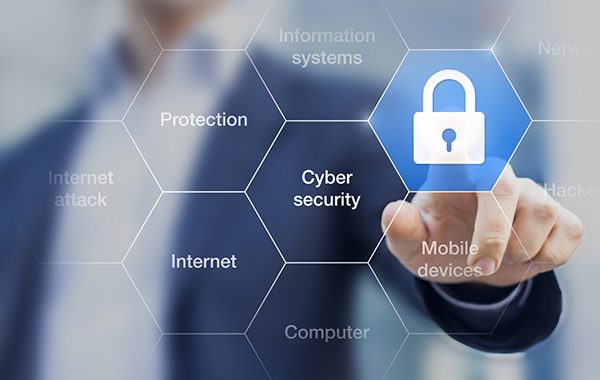Small and medium-sized businesses (SMBs) have become prime targets for cybercriminals, often seen as easier prey with potentially valuable data but fewer security resources. The consequences of a breach can be devastating—ranging from financial losses and operational disruption to irreparable damage to your reputation.
The good news? You don’t need a massive budget or a team of experts to significantly improve your security posture. By implementing a few fundamental measures consistently, you can dramatically reduce your risk. Let’s explore the essential steps every SMB should take to protect itself in the digital age.
1. Deploy Commercial-Grade Firewalls with Vigilant Monitoring
A firewall acts as your digital security guard, controlling incoming and outgoing network traffic based on predetermined security rules. While it might be tempting to save money with a consumer-grade firewall, these solutions are fundamentally inadequate for business use.

Why Consumer Firewalls Fall Short:
- Limited features and configuration options
- No intrusion detection capabilities
- Inadequate logging and alerting
- Not designed for business network complexity
- Often lack support for remote access requirements
Essential Commercial Firewall Features:
- Intrusion Detection System (IDS): Monitors network traffic for suspicious activity and potential attacks
- DNS Filtering: Prevents access to malicious websites and blocks known bad domains
- Internet Protocol Block List (IPBL): Stops connections to known malicious IP addresses
- Active Monitoring: Regular review of alerts to identify and respond to potential threats
For Remote Employees: With the rise of remote work, ensure your employees are also protected. This means:
- Using commercial-grade firewalls on home networks when possible
- Implementing a secure VPN (Virtual Private Network) for accessing company resources
- Providing clear guidelines on secure home network configurations
Remember, a firewall without monitoring is like having a security camera that no one watches. Regularly review alerts and establish protocols for responding to suspicious activity.
2. Implement Commercial-Grade Endpoint Protection with Active Monitoring
Endpoint protection refers to security software that runs on individual devices (endpoints) like laptops, desktops, and servers. These devices are often the primary targets for cyberattacks.

Why Commercial Solutions Matter:
- More sophisticated threat detection capabilities
- Centralized management for all devices
- Regular updates to combat new threats
- Better reporting and visibility into security posture
Key Features to Look For:
- Real-time scanning and protection
- Behavioral analysis to detect novel threats
- Ransomware protection
- Centralized management dashboard
- Regular updates and threat intelligence
Active Monitoring is Crucial: Simply installing endpoint protection isn’t enough. Your security team (or managed service provider) should regularly:
- Review protection status across all endpoints
- Investigate alerts and potential threats
- Ensure updates are current
- Generate reports on security posture
Many SMBs make the mistake of “set it and forget it” with their endpoint protection, which leaves them vulnerable to evolving threats.
3. Prioritize Regular Security Updates Across All Systems
The majority of successful cyberattacks exploit known vulnerabilities for which patches are already available. Keeping all systems updated is one of the most effective—and cost-free—security measures you can implement.

The Full Scope of What Needs Updating:
- Operating systems (Windows, macOS, Linux)
- Business applications
- Network equipment (routers, switches, firewalls)
- IoT devices (printers, security cameras, smart devices)
- Mobile devices used for business
Creating an Effective Update Process:
- Inventory: Maintain a complete inventory of all hardware and software
- Prioritize: Critical systems and those facing the internet should be updated first
- Schedule: Regular update windows during non-peak hours
- Test: When possible, test updates in a non-production environment
- Document: Keep records of all updates applied
Special Considerations for IoT Devices: Many IoT devices have shorter lifecycles and may stop receiving updates. For these devices:
- Purchase from vendors with good security track records
- Change default passwords immediately
- Place them on separate network segments when possible
- Replace devices that can no longer be updated
4. Establish a Strong Cybersecurity Policy
A cybersecurity policy is the foundation of your security program. It documents how your organization protects its information systems and data, ensuring consistency and clarity across the organization.

Key Components of an Effective Policy:ppppp
- Data Classification: Identify what data is sensitive and how it should be handled
- Access Control: Define who can access what systems and data
- Password Management: Requirements for strong passwords and multi-factor authentication
- Remote Access: Guidelines for secure remote work
- Data Handling: Procedures for storing, transmitting, and disposing of data
- Incident Response: Steps to take when a security incident occurs
Making Your Policy Practical:
- Tailor it to your specific business needs and risks
- Ensure it’s written in clear, non-technical language
- Make it easily accessible to all employees
- Review and update it at least annually or after significant changes
5. Conduct Regular Training on Your Cybersecurity Policy
Your security is only as strong as your employees’ awareness and adherence to policies. Human error remains one of the leading causes of security breaches.

Effective Training Approaches:
- Regular, Engaging Sessions: Don’t make it a one-and-done event
- Real-World Examples: Use actual case studies relevant to your industry
- Phishing Simulations: Test and reinforce vigilence against common attacks
- Multiple Formats: Combine in-person, online, and written materials
- Role-Specific Training: Tailor content to different roles and responsibilities
Building a Culture of Security:
- Encourage employees to report suspicious activity without fear of blame
- Make security awareness part of onboarding for all new employees
- Recognize and reward good security practices
- Designate security champions within departments
Measuring Effectiveness:
- Track phishing simulation results
- Monitor security incident reports
- Conduct periodic knowledge checks
- Solicit feedback on training effectiveness
6. Obtain Cybersecurity Insurance and Maintain Compliance
Even with robust security measures, breaches can still happen. Cybersecurity insurance (also called cyber liability insurance) can provide financial protection and support in the event of an incident.

What Cyber Insurance Typically Covers:
- Forensic investigation costs
- Business interruption losses
- Data recovery expenses
- Legal fees and regulatory fines
- Customer notification and credit monitoring
- Crisis management and public relations
Choosing Appropriate Coverage:
- Assess your specific risks and potential exposures
- Understand policy exclusions and limitations
- Ensure coverage aligns with your business size and industry
- Regularly review and update coverage as your business evolves
Maintaining Compliance:
- Stay informed about relevant regulations (GDPR, CCPA, HIPAA, etc.)
- Implement necessary controls to meet compliance requirements
- Document your compliance efforts
- Regularly assess compliance status
Compliance isn’t just about avoiding fines—it’s also about demonstrating due diligence in protecting sensitive information, which can be crucial in the event of a breach or legal action.
Closing Thoughts
Cybersecurity doesn’t have to be overwhelming or prohibitively expensive. By implementing these fundamental measures—proper firewalls, endpoint protection, regular updates, clear policies, employee training, and appropriate insurance—your SMB can significantly reduce its risk and build a strong security foundation.
Remember, cybersecurity is an ongoing process, not a one-time project. Start with these basics, build them into your regular operations, and continuously look for ways to strengthen your defenses. Your business, your customers, and your peace of mind will all benefit from the investment.
If your company needs a hand with its cybersecurity, reach out. We’re happy to help.

